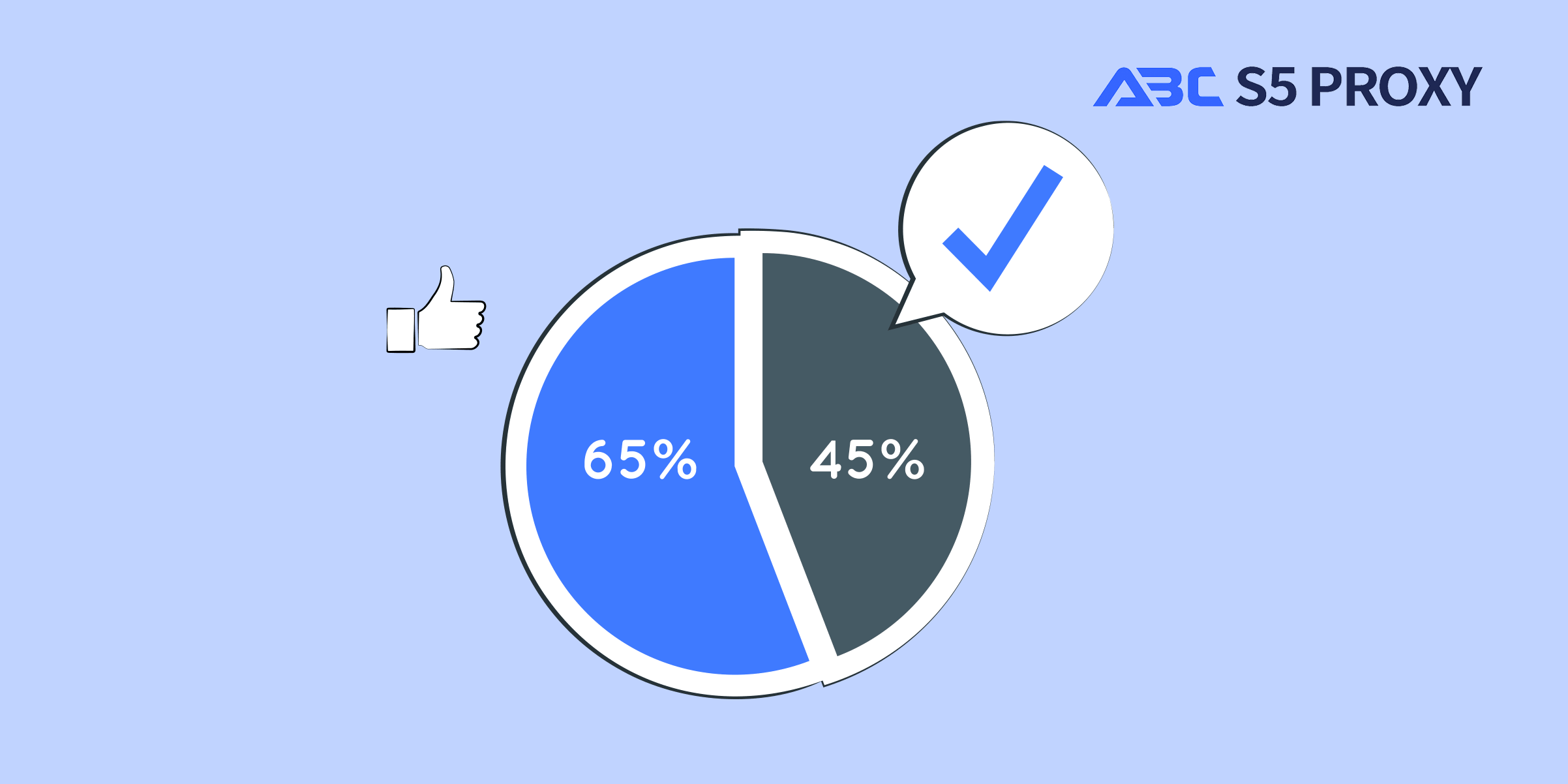Residential Proxies
Allowlisted 200M+ IPs from real ISP. Managed/obtained proxies via dashboard.

Proxies
Residential Proxies
Allowlisted 200M+ IPs from real ISP. Managed/obtained proxies via dashboard.
Residential (Socks5) Proxies
Over 200 million real IPs in 190+ locations,
Unlimited Residential Proxies
Use stable, fast, and furious 700K+ datacenter IPs worldwide.
Static Residential proxies
Long-lasting dedicated proxy, non-rotating residential proxy
Dedicated Datacenter Proxies
Use stable, fast, and furious 700K+ datacenter IPs worldwide.
Mobile Proxies
Dive into a 10M+ ethically-sourced mobile lP pool with 160+ locations and 700+ ASNs.

Web Unblocker
View content as a real user with the help of ABC proxy's dynamic fingerprinting technology.
Proxies
API
Proxy list is generated through an API link and applied to compatible programs after whitelist IP authorization
User+Pass Auth
Create credential freely and use rotating proxies on any device or software without allowlisting IP
Proxy Manager
Manage all proxies using APM interface

Proxies
Residential Proxies
Allowlisted 200M+ IPs from real ISP. Managed/obtained proxies via dashboard.
Starts from
$0.77/ GB
Residential (Socks5) Proxies
Over 200 million real IPs in 190+ locations,
Starts from
$0.045/ IP
Unlimited Residential Proxies
Use stable, fast, and furious 700K+ datacenter IPs worldwide.
Starts from
$79/ Day
Rotating ISP Proxies
ABCProxy's Rotating ISP Proxies guarantee long session time.
Starts from
$0.77/ GB
Static Residential proxies
Long-lasting dedicated proxy, non-rotating residential proxy
Starts from
$5/MONTH
Dedicated Datacenter Proxies
Use stable, fast, and furious 700K+ datacenter IPs worldwide.
Starts from
$4.5/MONTH
Mobile Proxies
Allowlisted 200M+ IPs from real ISP. Managed/obtained proxies via dashboard.
Starts from
$1.2/ GB
Knowledge Base
English
繁體中文
Русский
Indonesia
Português
Español
بالعربية

Structured vs Unstructured Data: Understanding the Differences
In today's digital age, data is at the core of everything we do. From businesses to individuals, the amount of data being generated and collected is growing at an exponential rate. However, not all data is created equal. Data can be broadly classified into two main categories: structured and unstructured data. Understanding the differences between these two types of data is crucial for organizations to effectively manage and derive insights from their data assets.
Structured data is data that is organized in a highly defined manner. It is typically stored in fixed formats such as databases or spreadsheets, making it easy to search, query, and analyze. Structured data is characterized by clear labels, categories, and relationships between data points. This type of data is highly organized and follows a predefined model or schema.
Examples of structured data include transaction records, customer information, inventory lists, and financial data. Structured data is essential for running business operations, as it provides a consistent and reliable source of information that can be used for decision-making and analysis. Structured data is commonly used in relational databases, where data is stored in tables with rows and columns.
On the other hand, unstructured data refers to data that lacks a predefined structure or format. Unstructured data is often generated in the form of text, images, videos, social media posts, and other unformatted content. This type of data does not fit into traditional databases and is challenging to organize and analyze using conventional methods.
Unstructured data is the fastest-growing type of data in today's digital landscape, accounting for a significant portion of the data generated daily. It poses unique challenges for organizations in terms of storage, processing, and analysis. Despite the lack of structure, unstructured data holds valuable insights that can help businesses gain a competitive edge and drive innovation.
The key differences between structured and unstructured data lie in their organization, storage, and analysis. Structured data is highly organized and stored in a structured format, making it easy to query and analyze using tools such as SQL. On the other hand, unstructured data is messy and unorganized, requiring advanced analytics techniques such as natural language processing and machine learning to extract meaningful information.
Structured data is suitable for traditional business applications such as reporting, forecasting, and data mining. It is commonly used in industries such as finance, healthcare, and retail for managing transactional data and customer information. In contrast, unstructured data is valuable for uncovering trends, sentiment analysis, and extracting insights from text and multimedia content. It is widely used in marketing, social media analytics, and customer feedback analysis.
Managing structured data comes with its own set of challenges, such as ensuring data quality, maintaining data integrity, and dealing with data redundancy. Organizations need to invest in robust data management systems and practices to ensure the accuracy and reliability of structured data.
Unstructured data poses even greater challenges, as it requires specialized tools and technologies to extract meaningful insights. Text mining, image recognition, and sentiment analysis are some of the techniques used to make sense of unstructured data. Additionally, unstructured data is often stored in multiple formats and sources, making it difficult to integrate and analyze effectively.
In conclusion, structured and unstructured data play distinct roles in today's data-driven world. While structured data provides a solid foundation for business operations and analysis, unstructured data offers valuable insights and opportunities for innovation. Organizations must strike a balance between managing structured data efficiently and harnessing the potential of unstructured data to stay competitive in the digital landscape.
By understanding the differences between structured and unstructured data, businesses can leverage their data assets more effectively and make informed decisions based on comprehensive insights. Embracing both types of data and investing in the right tools and technologies will enable organizations to unlock the full potential of their data and drive growth and success in the digital age.
Featured Posts
Popular Products
Residential Proxies
Allowlisted 200M+ IPs from real ISP. Managed/obtained proxies via dashboard.
Residential (Socks5) Proxies
Over 200 million real IPs in 190+ locations,
Unlimited Residential Proxies
Use stable, fast, and furious 700K+ datacenter IPs worldwide.
Rotating ISP Proxies
ABCProxy's Rotating ISP Proxies guarantee long session time.
Residential (Socks5) Proxies
Long-lasting dedicated proxy, non-rotating residential proxy
Dedicated Datacenter Proxies
Use stable, fast, and furious 700K+ datacenter IPs worldwide.
Web Unblocker
View content as a real user with the help of ABC proxy's dynamic fingerprinting technology.
Related articles

2025 Easy-to-use Anti-detect Browser - BitBrowser
2025 Easy-to-use Anti-detect Browser - BitBrowser, ABCProxy

Unlock the Power of Genlogin with ABCproxy: A Game-Changing Combination
Looking for a reliable Genlogin service? ABCproxy has got you covered. Discover secure and seamless login solutions with Genlogin on ABCproxy for ultimate online protection. Safeguard your data with ease.

Unlock Untraceable Surfing: Gemlogin Antidetect Browser Boosted by ABC Proxy
Gemlogin Antidetect Browser With ABC Proxy provides advanced security features for online activities. Enjoy secure browsing with anonymity and protection. Safeguard your data with this powerful combination of features.